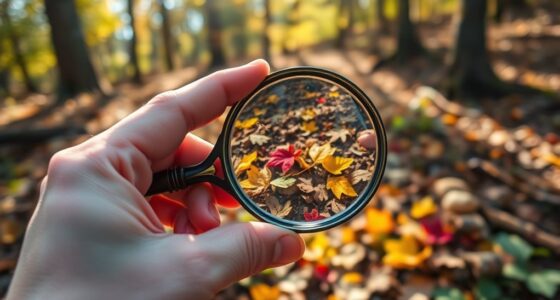Curiosity is your secret weapon for revealing creative potential. It drives you to explore new ideas and ask insightful questions, pushing boundaries in your thinking. By embracing diverse perspectives and learning from experimentation, you can refine your concepts and discover innovative solutions. When you see failures as learning opportunities, your resilience grows, enhancing your creative output. Committing to regular practice and a mindset of continuous learning keeps your creativity flowing. This journey of curiosity isn't just effective; it's transformative. Stick around, and you'll uncover more strategies to ignite your creative spark and enhance your innovative abilities.
Key Takeaways
- Curiosity fosters exploration, leading to innovative ideas and deeper understanding of challenges.
- Embracing diverse perspectives enhances problem-solving and drives creativity.
- Regular experimentation and learning from failures unlock creative potential and resilience.
- Effective questioning techniques stimulate creative thinking and uncover innovative solutions.
- Continuous learning and collaboration within a creative network inspire new insights and growth.
The Role of Curiosity in Creativity

Curiosity sparks creativity by pushing you to explore uncharted territories of thought and experience. When you embrace curiosity, you ignite a desire to question and investigate the world around you. This continuous questioning deepens your understanding of challenges, allowing you to examine alternative viewpoints and fostering creative thinking.
As you engage in this exploration, you'll find that experimentation plays a significant role. Testing "what if" scenarios helps you learn hands-on, refining your creative concepts along the way.
Don't shy away from failure; embracing it's essential. It cultivates resilience and adaptability, which are fundamental traits for revealing your creative potential. Each setback teaches you something valuable, guiding you toward innovative solutions.
With a curious mindset, you also enhance your problem-solving skills. By synthesizing diverse ideas, you'll uncover breakthroughs that conventional thinking might overlook.
In essence, curiosity acts as a catalyst for creativity, encouraging you to venture beyond the ordinary. This exploration not only enriches your ideas but also strengthens your ability to tackle complex problems, ultimately leading you to a more fulfilling and creative life.
Techniques for Asking Questions
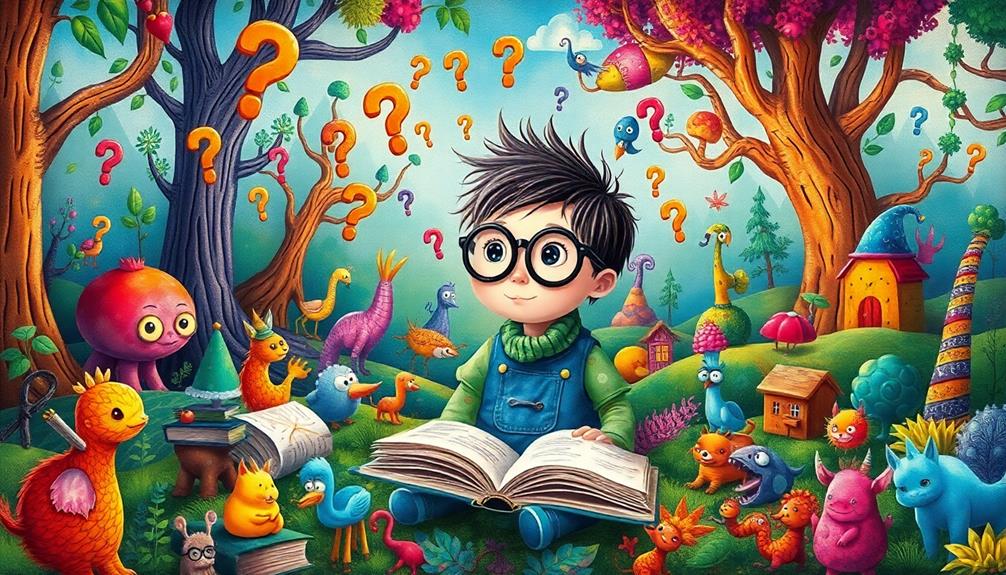
When you ask the right questions, you open doors to deeper understanding and innovative thinking. To release your creative potential, start with open-ended questions. These encourage expansive exploration, allowing you to dig deeper into topics instead of settling for simple yes or no answers.
One effective technique is the "5 Whys," where you ask "why" five times to uncover the root cause of a problem. This method fosters a thorough understanding and can lead to innovative solutions.
In addition, incorporate "how" and "what if" questions into your brainstorming sessions. These prompts stimulate creative thinking and enable you to explore different scenarios and ideas.
Consider asking yourself reflective questions like, "What did I learn from this experience?" This practice not only enhances problem-solving skills but also guarantees continuous improvement.
Embracing Diverse Perspectives
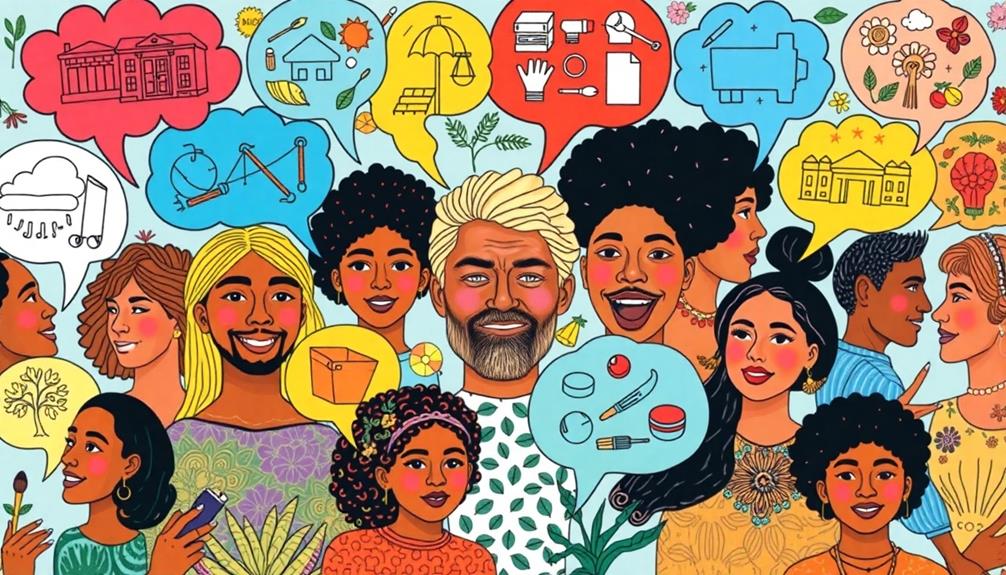
In today's interconnected world, embracing diverse perspectives is essential for releasing creativity and innovation. When you engage with individuals from various backgrounds, you open yourself to alternative viewpoints that enhance your problem-solving capabilities. This exposure not only leads to innovative solutions but also fosters personal growth as you learn from others' experiences.
| Benefits of Embracing Diversity | Outcomes |
|---|---|
| Broader range of ideas | Unique creative outcomes |
| Enhanced collaboration | Effective design solutions |
| Holistic understanding of challenges | Cross-pollination of concepts |
By creating an inclusive environment that values diversity, you cultivate a culture of curiosity. This encourages continuous learning and exploration beyond conventional boundaries. When you consider multiple angles, you gain deeper insights and discover solutions that may not have been apparent before.
Ultimately, embracing diverse perspectives drives creativity and innovation, allowing you to see challenges in a new light and develop unique approaches to problem-solving. So, seek out those who think differently, and watch your creative potential flourish.
The Value of Experimentation
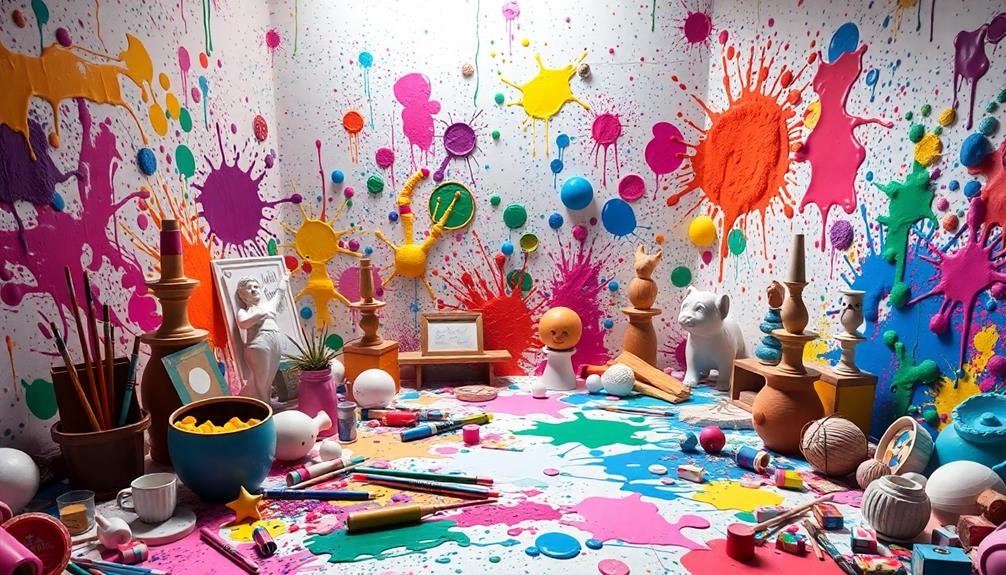
Experimentation is key to unfastening your creative potential, encouraging you to embrace trial and error in your projects.
By learning through iteration, you can refine your ideas and discover innovative solutions that mightn't come to light otherwise.
This mindset fosters resilience, helping you adapt and grow from every experience along the way.
Embracing Trial and Error
Releasing your creative potential often hinges on your willingness to embrace trial and error, as this approach allows you to explore various "what if" scenarios that spark innovative thinking.
By engaging in experimentation, you can refine your ideas and concepts through practical application, enhancing your creativity. Accepting that failure is a natural outcome of this process cultivates resilience, enabling you to adapt and grow.
In addition, when you align your creative pursuits with an abundance mindset, as emphasized in live in abundance, you open yourself up to greater possibilities and insights.
When you adopt a mindset that values learning opportunities, you reveal your full potential and improve your problem-solving skills. Research shows that organizations encouraging experimentation experience a 30% increase in innovation-driven growth, highlighting the tangible benefits of embracing trial and error.
You'll discover that each misstep is a stepping stone toward innovative solutions.
As you practice this hands-on learning approach, you'll find it fosters a deeper understanding of your creative process. The more you experiment, the more you'll realize that each trial, regardless of the outcome, contributes to your overall development.
Learning Through Iteration
When you engage in learning through iteration, you unfasten a powerful method for enhancing your creativity and problem-solving skills. This hands-on approach lets you experiment with various "what if" scenarios, promoting innovation and deeper understanding. By embracing trial and error, you can refine your concepts and develop more effective solutions.
Iterative processes encourage you to explore multiple perspectives, pushing the boundaries of your creative thinking. Failures become stepping stones, fostering resilience as you learn to view setbacks as opportunities for growth. This mindset is crucial in fields like design and technology, where rapid prototyping can greatly enhance the final product.
Here's a quick overview of the value of learning through iteration:
| Experimentation | Benefits | Applications |
|---|---|---|
| Explore ideas | Fosters innovation | Design |
| Test theories | Enhances problem-solving | Technology |
| Iterate solutions | Encourages creativity | Marketing |
| Learn from failure | Builds resilience | Product development |
Fostering Innovative Mindsets
Curiosity drives innovation, sparking the desire to explore new ideas and possibilities. By embracing the power of curiosity, you can reveal your creative potential through hands-on experimentation. When you test various "what if" scenarios, you actively engage with creative challenges, allowing for deeper understanding and enhanced problem-solving skills.
As research indicates, the transformative power of curiosity enhances cognitive flexibility, which can greatly aid in maneuvering complex creative tasks.
Iterative experimentation encourages a trial-and-error process where each setback becomes a stepping stone toward improvement. Instead of fearing failure, you'll learn to view it as an opportunity for growth, cultivating resilience in your creative journey.
Research shows that organizations that foster a culture of experimentation are more adept at adapting to rapidly changing markets, highlighting the importance of this mindset.
As you explore new concepts and approaches, remember that experimentation isn't just about success; it's about the insights gained along the way. By fostering an innovative mindset, you'll not only stimulate creative thinking but also develop the ability to pivot and adapt in the face of challenges.
Learning From Failure
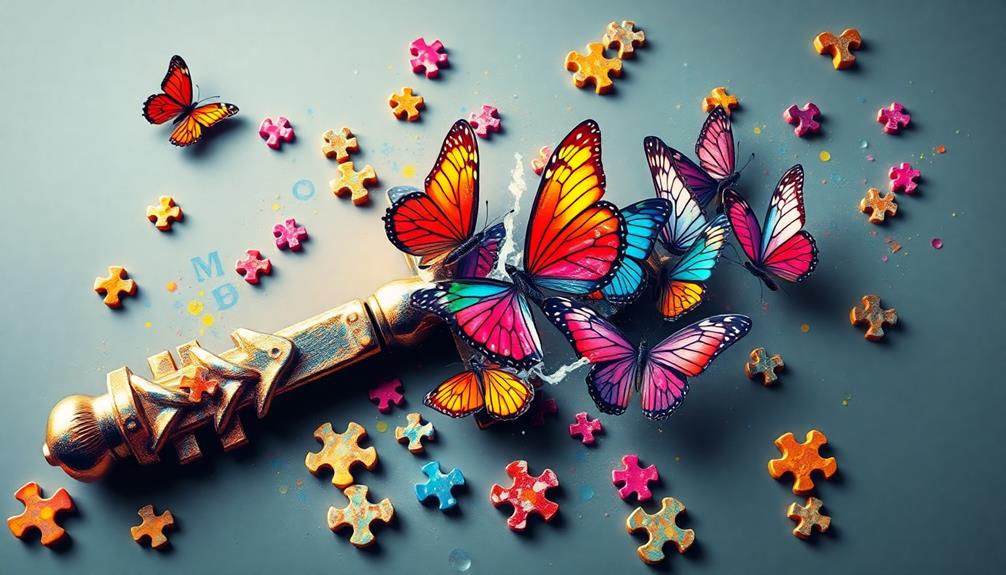
Throughout your creative journey, embracing failure can be one of the most powerful tools at your disposal. By acknowledging setbacks as valuable learning opportunities, you cultivate resilience and adaptability. This mindset not only enhances your problem-solving skills but also fosters a growth-oriented approach essential for long-term success.
A culture that celebrates learning from failure encourages exploration and helps you generate new ideas. Reflecting on your missteps often leads to different perspectives, which can spark innovative solutions. Here's a quick overview of how learning from failure can influence your creativity:
| Failure Type | Learning Outcome | Creative Benefit |
|---|---|---|
| Minor Setbacks | Adjustments in approach | Refined ideas |
| Major Failures | Deep insights | Innovative breakthroughs |
| Repeated Mistakes | Identification of patterns | Enhanced strategies |
| Experimentation | New techniques and methods | Expanded possibilities |
| Unforeseen Issues | Shift in focus and priorities | Unique solutions |
Defining and Understanding Creativity
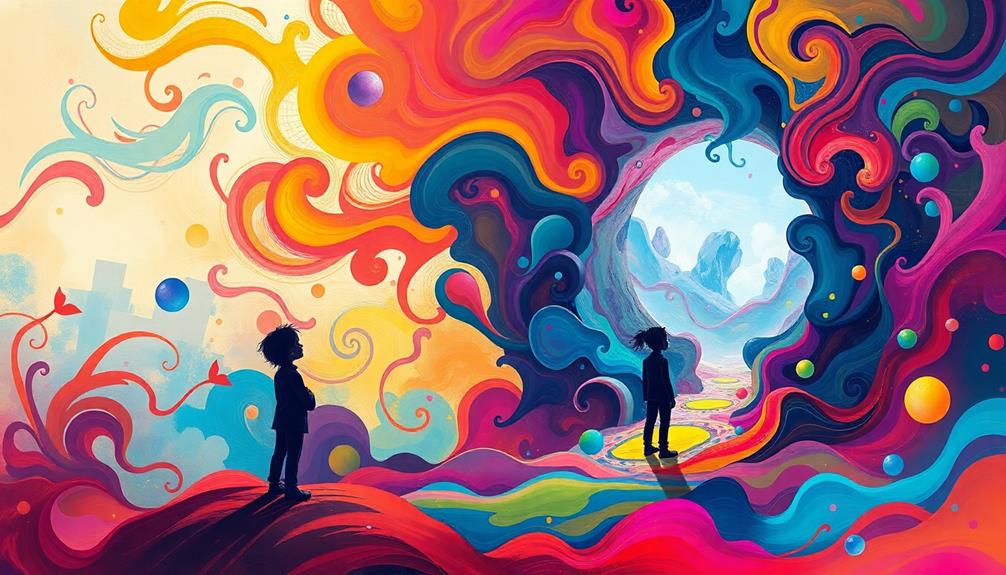
Creativity is a powerful force that drives innovation and problem-solving in every aspect of life. It involves generating new ideas and forming unique connections, allowing you to explore new possibilities and solutions. By employing divergent thinking, you can brainstorm multiple options, while convergent thinking helps you hone in on the best single solution.
In educational contexts, harnessing creativity enhances personalized learning experiences, facilitating personalized learning pathways that cater to individual needs and preferences.
Understanding creativity as a dynamic and multifaceted process encourages you to embrace your imaginative capacities. When you engage meaningfully with your projects, you move beyond random idea generation to focused, purposeful exploration.
Synthesis plays a key role here, as it combines different elements to create innovative outcomes. At the same time, analysis helps you evaluate ideas objectively, ensuring you select the most effective solutions.
The full power of creativity is realized when you actively seek to solve problems. This drive leads to success not just in your personal endeavors but also in professional domains.
Strategies to Unlock Potential
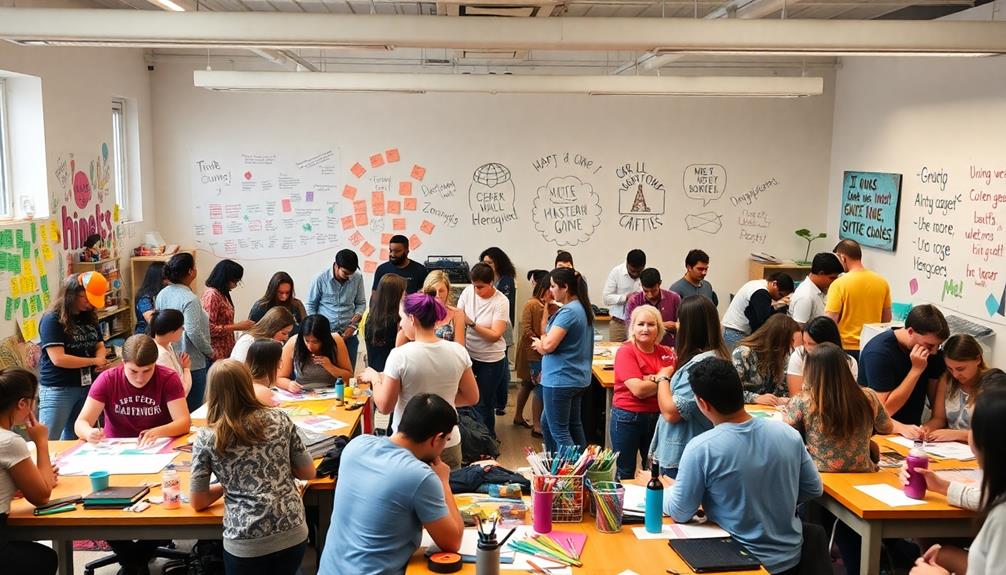
Releasing your creative potential requires intentional strategies that foster growth and exploration.
First, immerse yourself in new experiences; travel or engage in interdisciplinary learning to expand your knowledge base and spark fresh ideas. When you encounter different perspectives, you'll find inspiration that fuels your creativity.
Set aside time for regular brainstorming and free writing sessions. These practices challenge your assumptions and stimulate new connections, allowing you to think creatively.
Establish clear and challenging goals to keep your focus sharp and motivate you to push beyond your limits.
Collaboration is another powerful strategy. Partner with others who bring diverse viewpoints to the table.
Through collective brainstorming, you can enhance idea exchange and foster innovative solutions that you mightn't have discovered alone.
Building a Creative Network
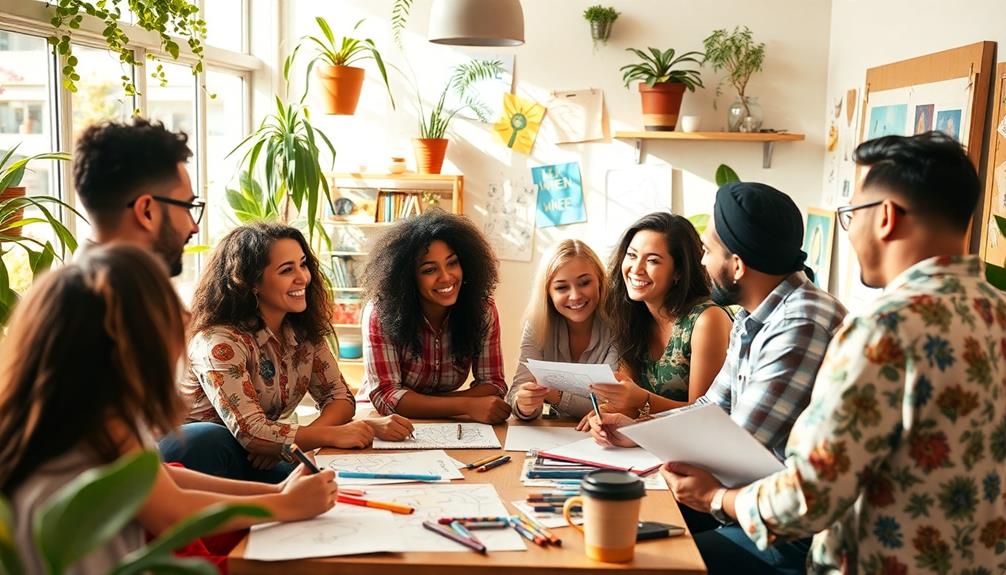
A robust creative network can greatly amplify your innovative capabilities. By building connections with local and online communities that share your interests, you gain access to diverse ideas and resources that enhance your creativity.
Participating in events, workshops, and meetups not only fosters in-person connections but also creates opportunities for collaborative brainstorming and idea exchange, leading to innovative projects.
Engaging with a supportive network offers motivation and facilitates constructive feedback, helping you refine your creative strengths and address weaknesses. You'll find that regular interaction within a creative community keeps you informed of industry trends, further enhancing your creative potential.
Don't underestimate the power of social media; it can greatly expand your reach. By sharing your creative content and initiatives online, you engage with a broader audience, increasing your visibility and inviting collaboration.
Ultimately, building a creative network is about more than just connections—it's about nurturing relationships that inspire you, challenge you, and contribute to your growth.
Embrace the collaborative spirit of your network, and watch as your creativity flourishes.
Continuous Learning Practices

Releasing your creative potential requires a commitment to continuous learning practices. By embracing curiosity, you'll explore new subjects and perspectives that fuel your imagination and drive fresh ideas.
Engaging in diverse educational activities—like workshops, online courses, and reading—significantly enhances your creative thinking and problem-solving abilities.
Reflective practices, such as journaling or self-assessment, are also powerful tools for identifying your strengths and weaknesses. This promotes personal and professional growth, helping you develop your creativity further.
Networking with individuals in various fields and attending industry events can provide valuable insights that stimulate your ongoing curiosity.
You'll find that these interactions enrich your learning process and inspire new ways of thinking.
Commitment to Regular Practice
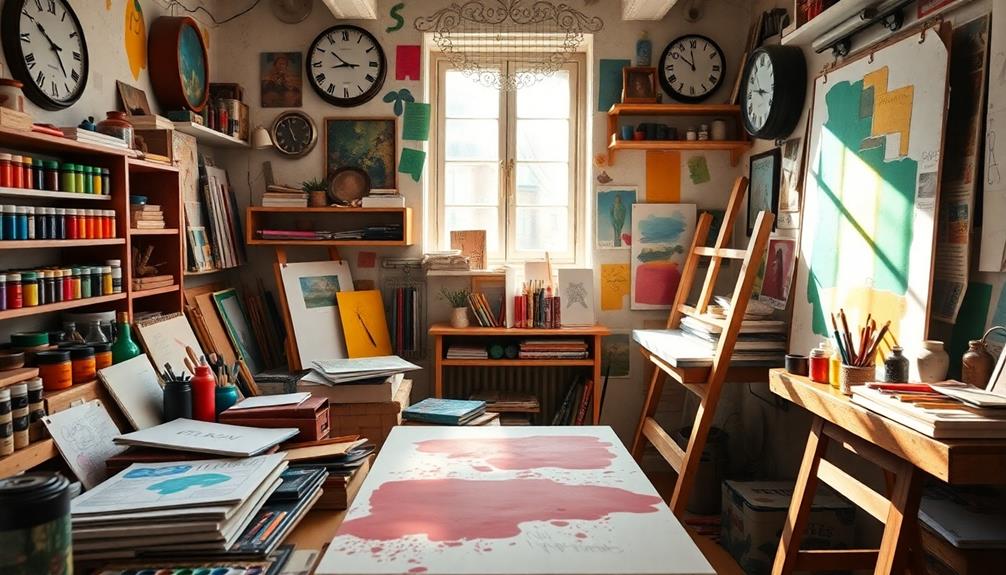
To truly release your creative potential, committing to regular practice is essential. When you set aside dedicated time for creative activities, you not only enhance your skills but also build discipline. This turns creativity from a sporadic hobby into a crucial part of your life.
Engaging consistently in diverse projects enables you to explore new techniques and ideas, sparking fresh perspectives and innovative solutions. Establishing a routine that includes regular creative practice helps you stay motivated and focused.
Over time, this commitment leads to significant progress, allowing you to develop your unique voice and style. As you continually create and reflect, you'll find that your problem-solving abilities improve as well.
Each cycle of creation deepens your insights, making you more adept at tackling challenges.
Frequently Asked Questions
How to Unlock Your Creative Potential?
Think of your mind as a garden; to open up your creative potential, you need to cultivate it.
Start by asking questions like "how," "why," and "what if" to dig deeper into your ideas. Explore new experiences and connect with others who inspire you.
Set aside time for brainstorming and free writing to let your thoughts flow. Embrace failure as a stepping stone, and you'll find your creativity blossoms into something extraordinary.
Does Curiosity Make You More Creative?
Curiosity definitely makes you more creative. When you ask questions and explore new ideas, you open up pathways for innovative thinking.
Engaging with unfamiliar topics or techniques encourages you to think outside the box, leading to unique solutions.
Plus, a curious mindset boosts your cognitive flexibility, allowing you to connect disparate concepts.
What Is the Power of Curiosity?
Curiosity's like a spark that ignites your imagination. It drives you to explore, ask questions, and seek new experiences.
This power pushes you beyond your comfort zone, fostering resilience and adaptability when faced with challenges. As you investigate diverse subjects, you enhance your problem-solving skills, uncovering innovative solutions.
Embracing your curiosity turns learning into a lifelong adventure, revealing hidden connections and inspiring creative breakthroughs you never thought possible.
What Is the Link Between Curiosity and Creativity?
Curiosity and creativity are closely linked because when you ask questions and seek new experiences, you open yourself up to fresh ideas.
This exploration helps you see problems from different angles, making it easier to develop unique solutions.
By embracing curiosity, you engage in critical thinking and experimentation, which fuels your creative process.
Conclusion
Releasing your creative potential starts with curiosity, fuels your imagination, and opens doors to new ideas. By asking questions, embracing diverse perspectives, and valuing experimentation, you'll discover fresh insights and innovative solutions. Learning from failure strengthens your resolve, while building a creative network inspires collaboration. Commit to continuous learning and regular practice, and you'll cultivate an environment where creativity thrives. So, ignite your curiosity, nurture your creativity, and watch as your world transforms.



